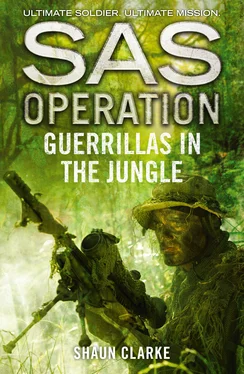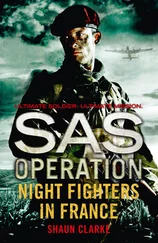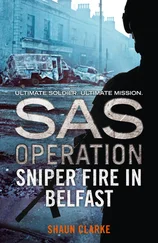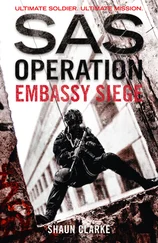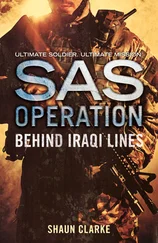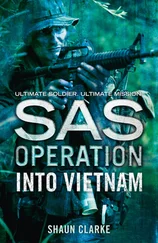SHAUN CLARKE
Published by HarperCollins Publishers Ltd
1 London Bridge Street
London SE1 9GF
www.harpercollins.co.uk
First published in Great Britain by 22 Books/Bloomsbury Publishing plc 1993
Copyright © Bloomsbury Publishing plc 1993
Cover layout design © HarperCollins Publishers Ltd 2016
Cover photographs © MILpictures/Tom Weber/Getty Images (soldier); Shutterstock.com (textures)
Shaun Clarke asserts the moral right to be identified as the author of this work.
A catalogue copy of this book is available from the British Library.
This novel is entirely a work of fiction. The names, characters and incidents portrayed in it are the work of the author’s imagination. Any resemblance to actual persons, living or dead, events or localities is entirely coincidental.
All rights reserved under International and Pan-American Copyright Conventions. By payment of the required fees, you have been granted the non-exclusive, non-transferable right to access and read the text of this e-book on screen. No part of this text may be reproduced, transmitted, down-loaded, decompiled, reverse engineered, or stored in or introduced into any information storage and retrieval system, in any form or by any means, whether electronic or mechanical, now known or hereinafter invented, without the express written permission of HarperCollins.
Source ISBN: 9780008154974
Ebook Edition © November 2015 ISBN: 9780008154981
Version: 2015-10-15
Contents
Cover
Title Page
Copyright Published by HarperCollins Publishers Ltd 1 London Bridge Street London SE1 9GF www.harpercollins.co.uk First published in Great Britain by 22 Books/Bloomsbury Publishing plc 1993 Copyright © Bloomsbury Publishing plc 1993 Cover layout design © HarperCollins Publishers Ltd 2016 Cover photographs © MILpictures/Tom Weber/Getty Images (soldier); Shutterstock.com (textures) Shaun Clarke asserts the moral right to be identified as the author of this work. A catalogue copy of this book is available from the British Library. This novel is entirely a work of fiction. The names, characters and incidents portrayed in it are the work of the author’s imagination. Any resemblance to actual persons, living or dead, events or localities is entirely coincidental. All rights reserved under International and Pan-American Copyright Conventions. By payment of the required fees, you have been granted the non-exclusive, non-transferable right to access and read the text of this e-book on screen. No part of this text may be reproduced, transmitted, down-loaded, decompiled, reverse engineered, or stored in or introduced into any information storage and retrieval system, in any form or by any means, whether electronic or mechanical, now known or hereinafter invented, without the express written permission of HarperCollins. Source ISBN: 9780008154974 Ebook Edition © November 2015 ISBN: 9780008154981 Version: 2015-10-15
Prelude
Chapter 1
Chapter 2
Chapter 3
Chapter 4
Chapter 5
Chapter 6
Chapter 7
Chapter 8
Chapter 9
Chapter 10
Chapter 11
Chapter 12
Chapter 13
Chapter 14
Chapter 15
Chapter 16
OTHER TITLES IN THE SAS OPERATION SERIES
About the Publisher
The guerrilla camp had been hacked out of the dense jungle and could be seen only from the air. Its centrepiece was a roughly levelled parade ground, about the size of a tennis court, though such a game was unknown to these people. Built in the natural caverns of red and ochre rock camouflaged by the overhanging foliage, the camp quarters consisted of a lean-to thatched with atap palm, with kitchen, lecture room, and sleeping benches for about sixty newcomers. The older hands were housed in an atap further up the hill, above the boulder and overlooking the parade ground.
A babbling stream, providing water for the camp, snaked around the boulder, past the parade ground and back into the dense, steaming jungle. The latrines were built further away, near to where the stream entered the jungle, carrying the excrement and urine to the isolated dwellings that used the same water for washing and drinking. The latrines themselves consisted of a thatched lean-to over a pit full of seething maggots. The stench was atrocious.
Few of the guerrillas were more than twenty-five years of age, most were under twenty, and a surprising number were little more than children. Some of the males wore khaki shorts, shirts and military caps, but most wore no item of uniform and were either dressed like coolies or wearing white shirts, grey trousers and felt hats. Most of them were barefoot, though some wore terumpas – wooden clogs held on by rubber straps.
Almost without exception, the women were in long-sleeved, high-necked white smocks and wide black trousers. All had bobbed hair and used no make-up. The better-educated taught Mandarin and singing; the others worked in the kitchen and did their fair share of the dirtiest, heaviest male chores. Though all of them acted as nurses, seamstresses and general domestics, they expected to be treated just like the men and could be just as merciless when it came to the treatment of prisoners or traitors.
The daily schedule was strict and demanding. Reveille was at first light, 5.30 in the morning, when the crying of gibbons and the clicking of cicadas dominated the chatter of the jungle. At 6.00, when the guerrillas had bathed and brushed their teeth, they took part in the flag-raising ceremony, singing ‘The Red Flag’. Roll-call was followed by a communal reading of the laws and regulations of the Malayan Races’ Liberation Army (MRLA). Calisthenics lasted until 6.30, followed by a cup of tea and a rest period.
At 7.00 they started drilling with weapons. This included practice in jungle-warfare tactics, racing up and down hills, climbing trees and learning various jungle ambush positions. At 8.30 they washed and rested, then had a breakfast of boiled tapioca or rice with greens – fern tops or sweet-potato leaves – followed by a second rest period.
Classes began at 10.00 sharp, with political and military lessons on a daily alternating basis, the former covering Marxism–Leninism, the writings of Mao Tse-tung and the current international situation; the latter, map-reading, tactical theory, lessons in the tactics of the Russian and Chinese armies, and the general principles of guerrilla warfare.
Depending on the length of the lectures, these classes would last until approximately noon, when the guerrillas would break for a snack of biscuits and hot water, with a rest period lasting until 1.00 p.m. From then until 3.00 they would have individual assignments: special instruction in Mandarin or general study groups for the new recruits; preparation for the next lectures by the instructors; jobs around the camp – collecting firewood, cleaning up, ministering to the many sick – then, at 3.00, another arduous hour of drilling with weapons. This was followed by a thirty-minute wash period and, at 4.30, the ‘evening’ meal, not much different from breakfast.
Even during the so-called ‘free period’ lasting until 6.00, they would be compelled to study or practise their drills.
At 6.00, after coffee, there was a parade of all hands to take down the colours and sing ‘The Red Flag’ again. Then the ‘political research’ would begin, with experienced political warriors leading group discussions about the doctrines of Communism. These discussions would include ‘self-criticism’ and ‘mutual criticism’ designed to eradicate the ego. No one smiled. Jokes were rarely made. Throughout every activity, they would repeatedly give one another the clenched-fist salute.
Читать дальше
